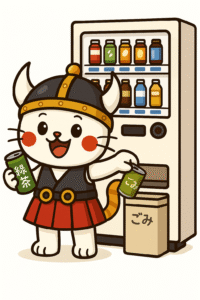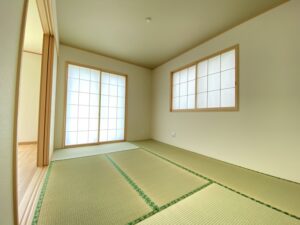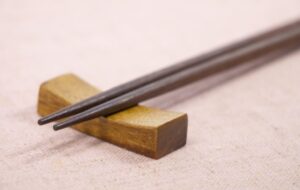JAPAN IN
ONE MINUTE 
~ Why were “tatami” mats chosen by Japanese? ~
Hey Issy! I went for a walk today and found a quiet old temple.
I went inside, and the floor was made of… grass?!
It felt super nice on my paws! What is that?
Ah, you must have stepped on “Tatami“!
It’s a traditional type of flooring in Japan, made from woven grass called igusa.
“Tatami“? It was soft and smelled nice too!
Is it only in temples?
Not at all. “Tatami” mats are found in traditional Japanese houses too.
They actually have a long history.
“Tatami” dates back to the 8th century, used by aristocrats and samurai during the Nara period.
At first, it was more like a mat rather than covering the whole floor.
By the Edo period, “tatami” had spread to ordinary people’s homes, becoming what we see today.
That’s amazing! I’ve seen “tatami” rooms before but didn’t know they were so old.
They always feel peaceful to me.
It was peaceful!
I felt like meditating… or maybe just taking a nap.
“Tatami” isn’t just about comfort. It’s very practical for Japan’s climate.
It absorbs humidity in the summer and keeps the room from drying out in the winter.
It adapts to the seasons naturally.
Amazing! It’s usually cold in Sweden, so “tatami” wouldn’t really work for us.
Summer in Japan can be hot and humid, but “tatami” really helps keep things comfortable!
Summary
“Tatami” is a traditional Japanese flooring made from woven grass that not only has a calming scent and soft texture but also plays an important role in adapting to Japan’s seasonal climate.




